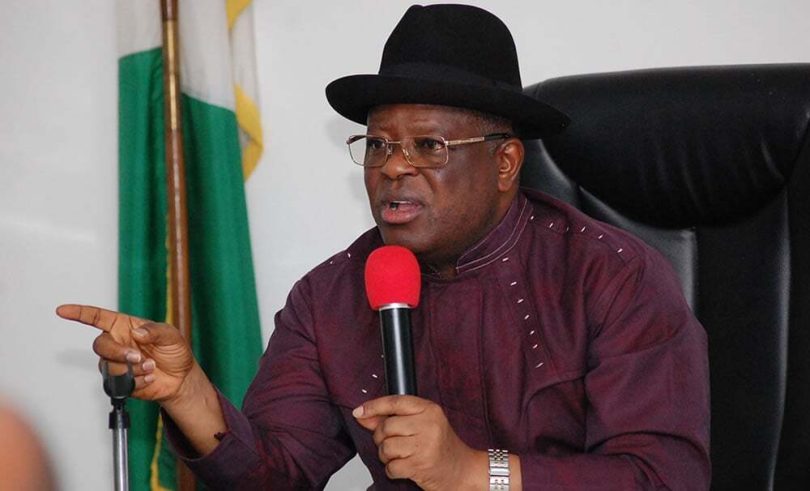Minister of Works David Umahi on Saturday asked Oyo State Governor Seyi Makinde to withdraw his recent remarks regarding detailed information on the average costs of the ongoing Lagos-Calabar Highway.
Mr Makinde had, on Thursday, accused Mr Umahi of “dancing around” when he was asked for the project’s average cost per kilometre in a recent interview on Arise TV.
“Asked a minister how much is the coastal road is, and then you’re (the minister) dancing around, going to say next kilometre is different from next kilometre? Then what is the average cost?” the governor stated.
Reacting, Mr Umahi, during the inspection tour of the Mararaba–Keffi dual carriageway in Nasarawa State, urged Mr Makinde to withdraw the statement, adding that if he insisted on it, he should come for a debate.
“I am his senior in governance and in engineering practice,” said Mr Umahi. “Anything he doesn’t understand, he should call me and ask.”
He added, “I respect him as a friend and brother, but he should withdraw the word that I am ‘dancing around.’ I never danced around. If he insists, he should come for a debate—that is very important.
“There is no ambiguity in cost computation. Estimated cost is provisional; average cost is definitive. That is what I explained.”
The minister, accompanied by Governor Abdullahi Sule of Nasarawa State, emphasised that costs per kilometre cannot be generalised due to differences in construction methodologies and materials used.
Defending the cost of the ongoing Mararaba-Keffi road project, “On the controversy about cost per kilometre, this project is about 43 kilometres, but we have increased it to utilise the money given for the project by the last administration, which was N73 billion.
“Cost per kilometre depends on material type — whether asphalt, surface dressing, or concrete. It is wrong to generalise.”
Mr Umahi said the estimated cost per kilometre included contingency and variation of price (VOP), which may not even be used.
He explained that the true average cost could only be determined after completion.
The minister said the project was increased to about 45 kilometres, and the cost was bound to change depending on the road’s construction.
“If we are doing surface tracing on the shoulder, the cost will be different; if we are using asphalt on the shoulder, the cost will be different; and if we are using concrete as we are using, the cost will be different.
“So it is being mischievous when you ask for the cost of a length of road, but by the professorial information, you can ask for the cost per kilometre, which could be estimated and could be divided into sections,” Mr Umahi stated.
(NAN)

